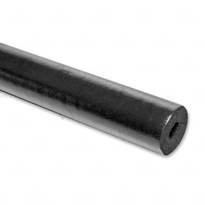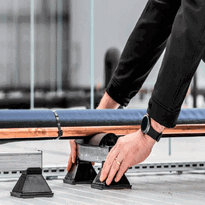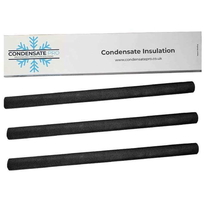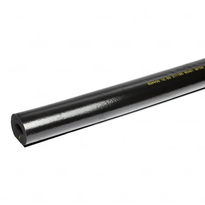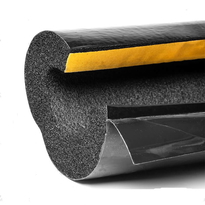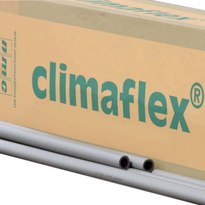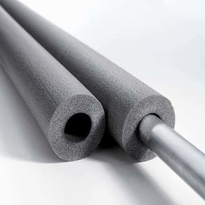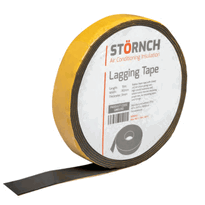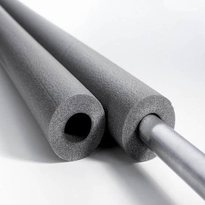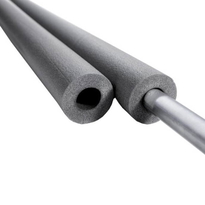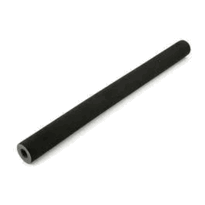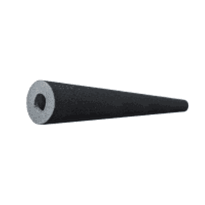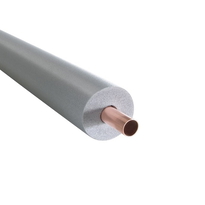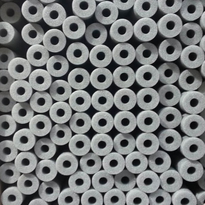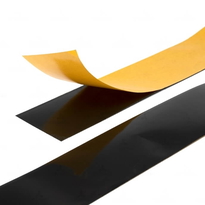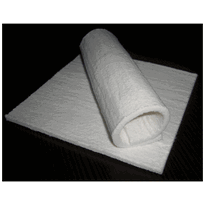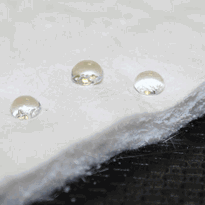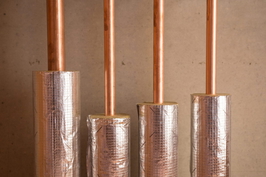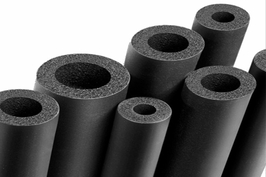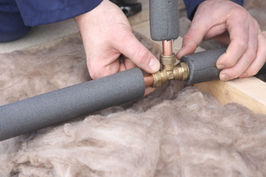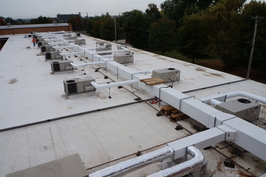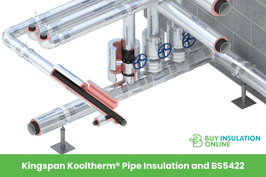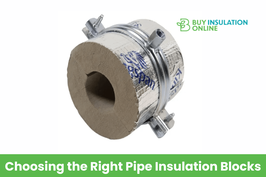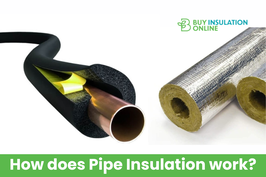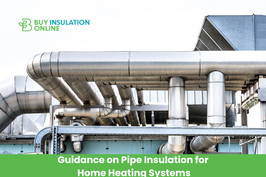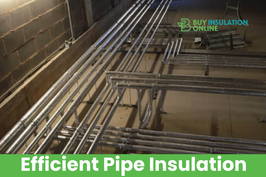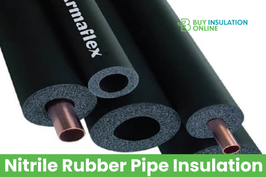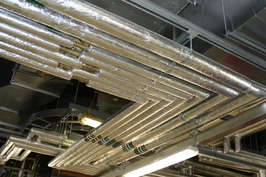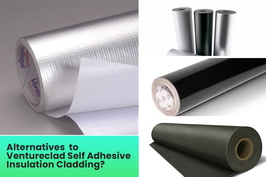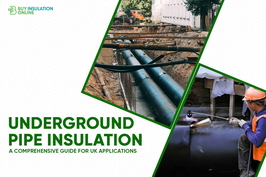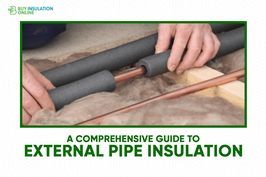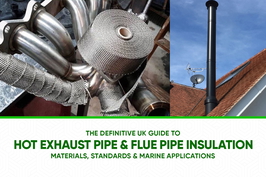Lagging for External Water Pipes
External pipe lagging is essential for insulating water pipes against temperature fluctuations, environmental factors, and adverse weather conditions. Its primary purpose is to minimize heat loss and prevent pipes from freezing during colder months. It is typically crafted from materials such as elastomeric foam, polyethylene, fiberglass, or rubber, which provide excellent moisture resistance, durability, and weatherproofing properties.
Proper installation of lagging not only shields pipes from harmful ultraviolet (UV) rays and rain but also extends their operational lifespan. Additionally, effective lagging enhances the overall efficiency of the plumbing system by maintaining consistent water temperatures and reducing energy consumption.
In the UK, selecting the right type of pipe lagging and following best practices during installation are crucial for optimal protection. Detailed guidance on suitable material options and installation techniques will follow, ensuring your external water pipes remain secure and well-insulated throughout the year.
Understanding the Purpose and Benefits of Pipe Lagging
Because external water pipes are often exposed to temperature fluctuations and environmental conditions, pipe lagging plays a vital role in insulation, protection, and efficiency. It helps to contain heat, significantly reducing heat loss from hot water pipes that run through unheated or outdoor areas. Proper insulation not only helps maintain water temperature but also contributes to lowering energy consumption, leading to reduced utility bills and a smaller carbon footprint. The thermal resistance offered by lagging acts as a barrier, decreasing heat transfer from the pipe to the surrounding environment. Different materials offer various thermal properties, making the right choice essential for optimal performance. The thickness of the insulation can be customized according to the severity of temperature extremes, ensuring maximum energy savings while providing effective protection against the elements. Selecting insulation with high reflectivity can further enhance thermal efficiency by bouncing radiant heat back into the pipe, improving overall performance.
Common Materials and Their Suitability for External Applications
Elastomeric foam insulation, made from closed-cell elastomeric foam, offers excellent moisture resistance, flexibility, and low thermal conductivity. These features make it highly suitable for outdoor conditions with high humidity or direct exposure to the elements. Its ability to withstand temperature fluctuations and resist moisture ingress helps to maintain performance over time, ensuring the longevity of the piping system. Additionally, elastomeric foam is resistant to mold and mildew growth, further enhancing its suitability for external use. Its capacity to sustain performance in various weather conditions makes it a popular choice for outdoor installations.
Polyethylene foam insulation is lightweight and affordable, making it a popular choice for various applications. However, it provides only moderate thermal protection and is susceptible to degradation when exposed to ultraviolet (UV) radiation. For outdoor use, additional weatherproofing measures such as protective covers or painting are necessary to prevent deterioration, which can compromise thermal efficiency and material integrity over the long term.
Fiberglass insulation with a vapor barrier offers high thermal resistance, effectively reducing heat loss. Nonetheless, it requires careful installation and protective coverings to prevent moisture absorption, which can lead to mold growth and material damage. When properly installed with associated protective measures, fiberglass can be a durable solution for external piping in certain settings.
Rubber (nitrile) insulation combines moisture resistance, flexibility, and ease of installation. Its robustness makes it suitable for various external environments, including those subject to mechanical stresses or rapid temperature changes. The material’s resistance to moisture and its flexibility facilitate versatile application and durable performance outdoors.
Phenolic foam, typically rigid and known for its high thermal resistance, can be adapted for outdoor use when combined with suitable weatherproofing solutions. It's particularly effective in heating applications where consistent thermal performance is required. Proper weatherproofing ensures the material’s durability and sustained insulation properties despite environmental exposure.
In summary, choosing the optimal external insulation material for water pipes in the UK depends on the specific environmental conditions, budget considerations, and maintenance requirements. Elastomeric foam and rubber (nitrile) provide excellent resistance to moisture and environmental stresses, making them ideal choices for most outdoor applications. Understanding the environmental demands helps in selecting the most suitable insulation.
Proper selection and installation are crucial to ensure the durability and efficiency of the piping system over time.
How Lagging Enhances Energy Efficiency and Protects Pipes
Lagging is essential in improving the energy efficiency of water piping systems by significantly reducing heat loss during operation. It insulates pipes, helping to maintain water temperatures and minimize the need for reheating, which in turn lowers energy consumption and utility bills. Proper insulation duration extends the lifespan of pipe materials, ensuring long-term durability and reducing maintenance costs. For instance, a one-centimeter layer of lagging can reduce heat loss by over 50% in systems with spaced water draw events. This results in substantial energy savings over time, especially in longer pipe runs. Additionally, lagging safeguards pipes against cold weather by preventing freezing and subsequent bursting, which helps to minimize repair costs. By maintaining consistent pipe temperatures, lagging also enhances system performance and user comfort through improved water flow and pressure.
Additional Advantages: Weather Resistance, Noise Reduction, and Maintenance
Weather resistance is a vital factor in ensuring the effectiveness and durability of external water pipe lagging, especially given the UK’s variable climate. Exposure to rain, snow, and fluctuating temperatures can lead to significant deterioration if the appropriate protective measures aren't employed. Properly selected materials resist degradation over time. Materials used for lagging often incorporate specialized enhancements, such as aluminium or Aluzinc cladding, to create a robust waterproof barrier. This prevents water ingress and mitigates weather-related damage, thereby extending the lifespan of the insulation. To further enhance protection, high-quality adhesives are used to seal joints and edges, providing a consistent defense against the elements. Incorporating vapour barriers like Armaflex beneath the cladding significantly reduces moisture penetration, which is critical in preventing issues like corrosion or mold growth. This additional layer helps preserve the integrity of the insulation over time. UV-resistant lagging materials are designed to withstand prolonged exposure to sunlight, which can degrade less robust products. Features like conical rain shields and outdoor-rated products—such as Armacell Tuffcoat—are specifically engineered to direct water away from vulnerable points, ensuring reliable performance regardless of outdoor conditions. Additionally, the soundproofing qualities of certain lagging materials contribute to a quieter environment, particularly in urban areas. Maintenance is simplified through products that require minimal upkeep, with durable finishes and easy-to-clean surfaces maintaining their protective qualities over years of service.
Conclusion
Ultimately, pipe lagging for external water pipes plays a vital role in safeguarding against environmental influences, enhancing energy efficiency, and reducing maintenance requirements. Choosing suitable materials that are designed for outdoor conditions ensures durability and effective thermal insulation. Proper installation improves weather resistance, minimizes noise, and extends the lifespan of the pipes. Understanding these practical benefits enables informed decision-making for maintaining water systems reliably, ultimately supporting operational efficiency and the structural integrity of the infrastructure over time.
